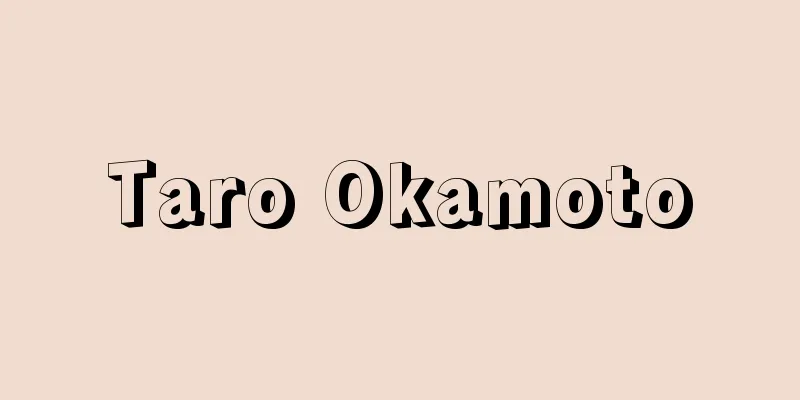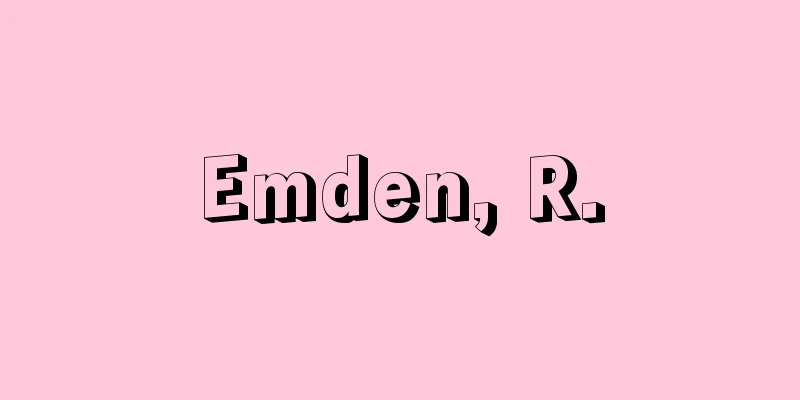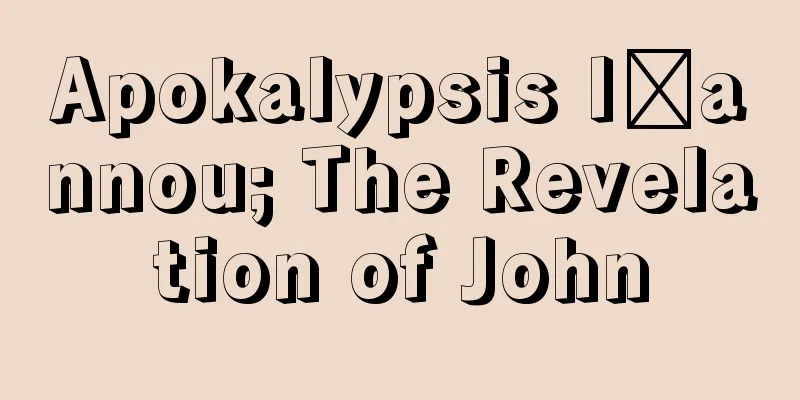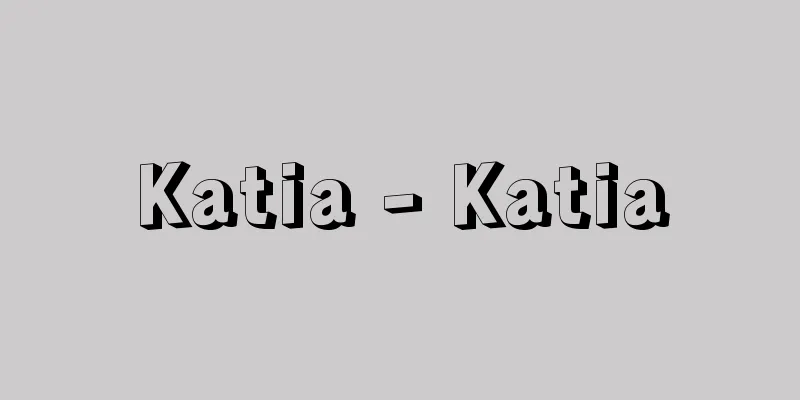Taro Okamoto

|
Artist. Born in Tokyo on February 26, 1911. His father was the manga artist Okamoto Ippei, and his mother Kanoko was a poet and novelist. In 1929 (Showa 4), he entered the Tokyo School of Fine Arts, but dropped out after six months to accompany his parents to France. After his parents returned to Japan, he stayed in Paris alone and studied philosophy and ethnology at the University of Paris. In 1933, he joined the international abstract art movement, the Abstraction-Création Society. In 1937, he left the society, and the following year participated in the Paris International Surrealist Exhibition, where he deepened his friendship with surrealists. He returned to Japan in 1940. The following year, he exhibited at the Nikaten Exhibition and won the Nika Prize. He was drafted during World War II. After the war, he became a member of the Nikaten Exhibition and advocated polarism, developing a wide range of avant-garde art movements. He exhibited works such as "Yoake" and "Okite no Okite" at the Nikaten Exhibition. From 1952 (Showa 27), he developed an interest in Jomon culture, changed his style of writing, and became a prolific writer. His book Forgotten Japan - Okinawa Culture Theory (1969) won the Mainichi Publishing Culture Award. He held solo exhibitions in Tokyo, Paris, and New York, and exhibited his work at many international exhibitions, including the San Paolo (1953) and Venice (1954) Biennales. He also created many works, including ceramic wall paintings at the Tokyo Metropolitan Government Building (former Marunouchi building), and sculptures such as the Okamoto Kanoko Literary Monument. He was the thematic exhibition producer for the 1970 World Exposition in Japan, and he also designed the Tower of the Sun himself, making him an active figure in a wide range of fields including architecture and design. [Tadao Ogura and Hideyuki Yanagisawa] The Tower of the Sun, which still stands in Expo '70 Commemorative Park (Suita City, Osaka Prefecture), was registered as a national tangible cultural property in 2020 (Reiwa 2), as it is an innovative design that was realized using a variety of techniques. [Editorial Department, May 21, 2021] "Black Sun" (1959, Bijutsu Shuppansha) ▽ "My Contemporary Art" (1963, Shinchosha) ▽ "Opening Today - Dialogue with the Sun" (1967, Kodansha) ▽ "Okamoto Taro" (1968, Bijutsu Shuppansha) ▽ "Staring Contest" (1975, Bancho Shobo) ▽ "Okamoto Taro's Challenging Skiing - Burning Joy in a White World" (1977, Kodansha) ▽ "Taro Okamoto" (1977, Doyo Bijutsusha) ▽ "Okamoto Taro" (1979, Heibonsha) ▽ "Okamoto Taro Collected Works, 9 volumes (1979-1980, Kodansha)" ▽ "Playful Words" (1981, Nihon Geijutsu Shuppansha) ▽ "Mother's Letters: Reminiscences of Mother Kanoko and Father Ippei" (1993, Chikuma Shuhansha) ▽ "Ippei Kanoko: Amazing Parents Who Live in Their Hearts" (1995, Chikuma Shuhansha) ▽ "Okamoto Taro's Joy" edited by Okamoto Toshiko (1997, Nigensha) ▽ "Eyes: Beautiful Anger" edited by Okamoto Toshiko (1998, Chikuma Shuhansha) ▽ "Okamoto Taro: Challenges/Dreams and Vows (Excerpts)" (1998, Japan Library Center) ▽ "Okamoto Taro's Books" 5 volumes (1998-2000, Misuzu Shobo) ▽ "Okamoto Taro's Okinawa" edited by Okamoto Toshiko (2000, Japan Broadcasting Publishing Association) ▽ "Lyrical Self-Portrait" (2001, Misuzu Shobo) ▽ ``Running Self-Portrait'' (2001, Misuzu Shobo) ▽ ``Everyone Was Speaking Italian'' (2001, Shobunsha) ▽ ``Ask Taro! ” 3 volumes (2001, Seirin Kogeisha) ▽ “The World of Taro Okamoto” edited by Toshiko Okamoto and Shinji Saito (1999, Shogakukan) ▽ “A Challenge to the Art Collection” (Kodansha Bunko) ▽ “A Study of Okinawan Culture: Forgotten Japan” (Chuko Bunko) ▽ “Today’s Art: Who Creates the Times” (Kobunsha Forest of Wisdom Bunko) ▽ “Youthful Picasso” (Shincho Bunko) ▽ “Art and Youth” (Kobunsha Forest of Wisdom Bunko) ▽ “The Magical Power of Beauty” (Shincho Bunko) ▽ “Traditions of Japan” (Kobunsha Forest of Wisdom Bunko) ▽ “The Universe of Taro Okamoto” 5 volumes (Chikuma Gakugei Bunko) ▽ “Rediscovering Japan: A Topographical Chronicle of the Arts” (Kadokawa Sophia Bunko) ▽ ``The Spell of Primary Colors (Kodansha Bungei Bunko)'' ▽ ``A World Journey of Beauty (Shincho Bunko)'' ▽ ``Throughout the World, Shield Your Destiny (Seishun Bunko)'' ▽ ``Embrace the Loneliness Within You (Seishun Bunko)'' ▽ ``Have Poison Within You, New Edition (Seishun Bunko)'' ▽ ``The Eyes of Okamoto Taro (Kadokawa Bunko)' ' ▽ ``Okamoto Taro Is Here, by Okamoto Toshiko (1999, Shinchosha)'' ▽ ``The Taro Myth -- Around the Universe called Okamoto Taro, edited by Okamoto Toshiko (1999, Nigensha)'' ▽ ``The Red Rabbit -- A Praise for Okamoto Taro, by Murakami Yoshio (2000, Sofusha)'' ▽ ``Okamoto Taro -- Is Art an Explosion?, by Kawagiri Nobuhiko, New Edition (2011, Okisekisha)' ' ▽ ``Art is an Explosion! --Taro Okamoto's delightful sayings (Shogakukan Bunko) [Reference] | |Source: Shogakukan Encyclopedia Nipponica About Encyclopedia Nipponica Information | Legend |
|
美術家。明治44年2月26日東京に生まれる。父は漫画家岡本一平、母かの子は歌人、小説家。1929年(昭和4)東京美術学校に入学するが、半年で中退して父母の渡仏に同行。父母の帰国後も一人パリにとどまり、パリ大学で哲学、民族学を学ぶ。1933年国際的な抽象芸術運動のアプストラクシオン・クレアシオン協会に参加した。1937年同協会を脱退し、翌年パリ国際超現実派展に参加してシュルレアリストたちと交友を深める。1940年帰国。翌年二科展に出品し、二科賞を受賞。第二次世界大戦に応召。戦後、二科展会員になるとともに対極主義を唱え、幅広く前衛芸術運動を展開する。二科展に『夜明け』『森の掟(おきて)』などを発表。1952年(昭和27)からは、縄文文化への関心を高め、作風を変えるとともに旺盛(おうせい)な執筆活動を行う。著書『忘れられた日本――沖縄文化論』(1969)は毎日出版文化賞を受賞した。東京、パリ、ニューヨークで個展を開いたほか、サン・パウロ(1953)、ベネチア(1954)のビエンナーレをはじめ、多くの国際展にも出品。東京都庁舎(丸の内旧都庁舎)などの陶板壁画、岡本かの子文学碑ほかの彫刻なども数多く手がけた。1970年日本万国博覧会のテーマ展示プロデューサーとなり、自らも『太陽の塔』を設計するなど、建築、デザインを含む幅広い領域で活躍した。 [小倉忠夫・柳沢秀行] なお、現在も万博記念公園(大阪府吹田(すいた)市)にある『太陽の塔』は、斬新な造形をさまざまな技術を駆使して実現したものとして、2020年(令和2)に岡本太郎の作品として初めて、国の登録有形文化財に登録された。 [編集部 2021年5月21日] 『『黒い太陽』(1959・美術出版社)』▽『『私の現代芸術』(1963・新潮社)』▽『『今日をひらく――太陽との対話』(1967・講談社)』▽『『岡本太郎』(1968・美術出版社)』▽『『にらめっこ』(1975・番町書房)』▽『『岡本太郎の挑戦するスキー 白い世界に燃える歓び』(1977・講談社)』▽『『Taro Okamoto』(1977・土曜美術社)』▽『『岡本太郎』(1979・平凡社)』▽『『岡本太郎著作集』全9巻(1979~1980・講談社)』▽『『遊ぶ字』(1981・日本芸術出版社)』▽『『母の手紙――母かの子・父一平への追想』(1993・チクマ秀版社)』▽『『一平かの子――心に生きる凄い父母』(1995・チクマ秀版社)』▽『岡本敏子編『岡本太郎歓喜』(1997・二玄社)』▽『岡本敏子編『眼――美しく怒れ』(1998・チクマ秀版社)』▽『『岡本太郎 挑む/夢と誓い(抄)』(1998・日本図書センター)』▽『『岡本太郎の本』全5巻(1998~2000・みすず書房)』▽『岡本敏子編『岡本太郎の沖縄』(2000・日本放送出版協会)』▽『『リリカルな自画像』(2001・みすず書房)』▽『『疾走する自画像』(2001・みすず書房)』▽『『みんなイタリア語で話していた』(2001・晶文社)』▽『『太郎に訊け!』全3巻(2001・青林工藝社)』▽『岡本敏子・斎藤慎爾編『岡本太郎の世界』(1999・小学館)』▽『『画文集 挑む』(講談社文庫)』▽『『沖縄文化論――忘れられた日本』(中公文庫)』▽『『今日の芸術――時代を創造するものは誰か』(光文社知恵の森文庫)』▽『『青春ピカソ』(新潮文庫)』▽『『芸術と青春』(光文社知恵の森文庫)』▽『『美の呪力』(新潮文庫)』▽『『日本の伝統』(光文社知恵の森文庫)』▽『『岡本太郎の宇宙』全5巻(ちくま学芸文庫)』▽『『日本再発見――芸術風土記』(角川ソフィア文庫)』▽『『原色の呪文』(講談社文芸文庫)』▽『『美の世界旅行』(新潮文庫)』▽『『自分の運命に盾を突け』(青春文庫)』▽『『自分の中の孤独を抱け』(青春文庫)』▽『『自分の中に毒を持て』新装版(青春文庫)』▽『『岡本太郎の眼』(角川文庫)』▽『岡本敏子著『岡本太郎が、いる』(1999・新潮社)』▽『岡本敏子編『太郎神話――岡本太郎という宇宙をめぐって』(1999・二玄社)』▽『村上善男著『赤い兎――岡本太郎頌』(2000・創風社)』▽『川桐信彦著『岡本太郎――芸術は爆発か』新装版(2011・沖積舎)』▽『岡本敏子著『芸術は爆発だ!――岡本太郎痛快語録』(小学館文庫)』 [参照項目] | |出典 小学館 日本大百科全書(ニッポニカ)日本大百科全書(ニッポニカ)について 情報 | 凡例 |
>>: The Okamoto Daihachi Incident
Recommend
O'Connor, Frank
...Liam O'Flaherty (1896-1984) wrote many nov...
Lake Katrine (English spelling)
A lake in the southwest of the Central County (for...
Puruṣapura (English spelling) Purusapura
...It is also famous for its handicrafts such as ...
Aden Protectorate
...With the opening of the Suez Canal, its value ...
Palos de la Frontera (English spelling)
A village with a population of 3,353 (1979) on the...
Ministry of Greater East Asia
Following the expansion of the occupied territori...
Seasonal record
A type of stipend under the Ritsuryo system. Acco...
Moroz
...The transition from winter to summer and back ...
Uramatsu family - Uramatsuke
The Hino family of the Northern House of the Fujiw...
Three-faced babysitter - Mitsumen no Komori
The title of a Kabuki dance piece. Tokiwazu. The o...
Distemper
This is an infectious disease caused by the distem...
Proportionality - Fins
When the relationship between two positive number...
Silent Don (English spelling) Tihiy Don
A full-length novel by Soviet novelist Sholokhov....
Asada Haruharu - Asada no Yoshun
Year of birth: Unknown He was an official and a ma...
Hydrolysis constant - Hydrolysis constant
The equilibrium constant for the hydrolysis of th...









